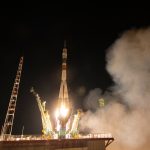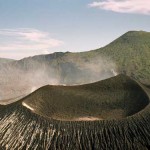
Three Mile Island nuclear plant, the site of a partial core meltdown in 1979. Image: Shutterstock
Experts are comparing the nuclear incidents in Japan to Three Mile Island, not The China Syndrome.
At least 14 reactors in power plants across Japan were affected by the earthquake on March 11. While most of them appear to have achieved core cooling and have shut down safely, Fukushima Daiichi units 1-3 are now working at emergency levels.
But experts say this is not another Chernobyl. Dr John Price, a former member of the Safety Policy Unit of the National Nuclear Corporation UK, announced during a press briefing yesterday “Meltdown is not going to occur… that would have happened within the first few hours what we’re looking at is a long term cooling problem.”
Dr Price explained that in an incident like this, the cores continue to generate heat even after a shutdown has occurred. There will be a slow decrease over a few days, but there still has to be a way to get rid of the heat.
This usually is done through circulation of heat exchange. “But that system seems to have failed, so we’re now onto a new system where we have to inject water and let steam come out.”
“The question is we now face is what’s going to happen to unit two. I believe they’ve got cooling water to units one and three.”
Dr Price was joined at the briefing by Peter Burns, the former CEO of the Australian Radiation Protection and Nuclear Safety Agency (ARPANSA), and Professor Gerald Laurence, a Radiation Safety Consultant to the University of Adelaide and Flinders University. Mr Burns said that the primary question is have the containment areas been breached, which could lead to the release of noble gases and other products.
“There seems to be reports of fuel being exposed and overheating, and this could compromise the cladding of the fuel and cause the release of more serious fission products. But it would appear as most of those are contained in the primary containment vessels at this stage, so the releases are of a more moderate nature.”
Mr Burns added that in regards to radiation spreading around the globe, this would not happen at a great speed or in large amounts. At this stage the radiation hasn’t gotten up to the troposphere and there is no intermingling between the north and south hemisphere at lower levels. “You need to punch through t the stratosphere to get that intermingling.”
“Although the materials will at those latitudes go round in the direction of Canada and North America, by the time it gets there, the actual concentrations will be so low that the doses will be miniscule compared to the normal background for the sort of releases that I think we’re talking about at the moment.”
Professor Laurence concurred with this, saying that the radiation will go around the globe, but not at the huge speeds associated with the stratosphere. “It’s not going to do that, given the much lower temperatures and the fact that there hasn’t been an explosive excursion which would bring material into the stratosphere. So we’re talking about the normal lower level patterns of atmospheric circulation.”






